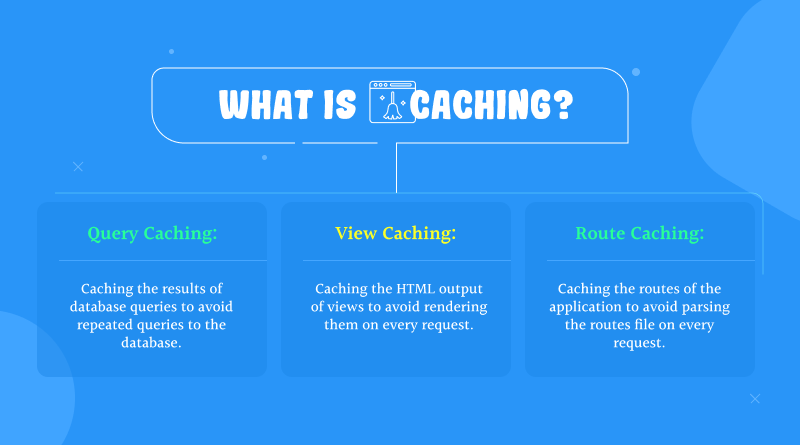Laravel is a free and open source framework based on PHP that is widely used to build high-performance web applications. Many web developers and companies use this framework for elegant UI/UX.
Hosting a Laravel application requires a robust infrastructure to ensure that the application performs optimally under heavy traffic. MilesWeb provide the best Laravel hosting infrastructure with advanced features. It means there will be no latency rate and users will get a good uptime.
Caching is an essential technique that can help boost the performance of a Laravel application. This is because cache migrates all data from the host to the local server machine. In this blog post, we’ll discuss the role of caching in Laravel hosting, clearing laravel cache and how to implement it effectively.
What is Caching?

Caching is a technique that involves storing frequently accessed data in a temporary storage location, such as RAM or disk, to improve application performance. Caching reduces the number of requests to the server and speeds up the response time of the application. In a Laravel application, caching can be implemented in various ways, such as:
- Query Caching: This involves caching the results of database queries to avoid repeated queries to the database.
- View Caching: This involves caching the HTML output of views to avoid rendering them on every request.
- Route Caching: This involves caching the routes of the application to avoid parsing the routes file on every request.
The Role of Caching in Laravel Hosting
In Laravel hosting, caching plays a critical role in improving the performance of the application. Caching reduces the number of requests to the server, thereby reducing the load on the server. MilesWeb’s shared hosting plans offer features of OP Cache where load is minimal. This, in turn, leads to faster response times and improved user experience. This is the reason why web hosts like us are able to deliver maximum uptime.
Caching can also help reduce the amount of time it takes to render a view or execute a database query. By caching frequently accessed data, the application can serve the cached data from memory, thereby avoiding the overhead of executing a query or rendering a view on every request.
Related: What is Laravel And How To Install It?
Implementing Caching in Laravel Hosting
Implementing caching in Laravel hosting involves configuring the caching drivers and setting up caching for the relevant parts of the application. The following steps outline how to implement caching in Laravel hosting:
Step 1: Choose a Caching Driver
Laravel supports multiple caching drivers, including Redis, Memcached, APC, and file-based caching. Each caching driver has its advantages and disadvantages, so choose the one that best suits your hosting environment and application requirements.
Step 2: Configure the Caching Driver
Once you have chosen a caching driver, you need to configure it in the Laravel configuration file. Open the config/cache.php file and set the driver to the caching driver you have chosen. You can also set other configuration options for the caching driver, such as the cache prefix and the cache time.
Step 3: Implement Caching in the Application
After configuring the caching driver, you need to implement caching in the application. This involves caching the relevant parts of the application, such as queries, views, and routes.
For example, to cache a database query, you can use the cache() helper function to cache the query result. Here’s an example:
$users = cache()->remember(‘users’, 60, function () {
return DB::table(‘users’)->get();
});
This code caches the result of the users query for 60 seconds. On subsequent requests, the cached data will be served from memory instead of executing the query again.
To cache a view, you can use the following command:
php artisan view:cache
This command caches all the views in the application, making them available for faster rendering on subsequent requests.
To cache the routes of the application, you can use the following command:
php artisan route:cache
This command caches the routes of the application, making them available for faster parsing on subsequent requests.
Related: Benefits Of Laravel Performance Optimization
Is MilesWeb Helpful in Hosting Laravel Applications?
- We do provide SSH access to our clients.
- Cron jobs is also enabled.
- Backup option is provided in the cPanel.
- For security we use WAF along with antimalware on the server.
Caching is a critical technique for improving the performance of Laravel applications in hosting environments. By caching frequently accessed data, the application can serve the cached data from memory, avoiding the overhead of executing a query or rendering a view on every request. MilesWeb being the leading web hosting service provider gives reliable hosting infrastructure enabling users to get the maximum uptime and higher efficiency.















